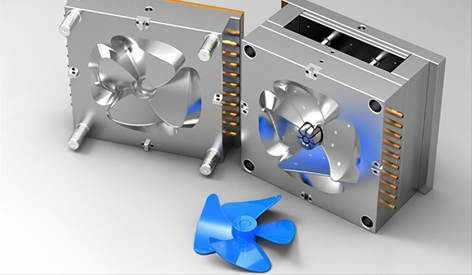Views: 6 Author: Site Editor Publish Time: 2024-04-16 Origin: Site









High-volume injection molding stands as a cornerstone in modern manufacturing, offering unparalleled efficiency and scalability in producing large quantities of plastic parts. This comprehensive guide delves into the intricate structure of high-volume injection molding and explores strategies to maximize mold life for sustained productivity.
1. Understanding High-Volume Injection Molding
High-volume injection molding is a manufacturing process that involves injecting molten plastic into a mold cavity at high pressure and speed to produce large quantities of identical plastic parts. It is widely utilized across industries for mass-producing consumer goods, automotive components, medical devices, and more.
2. Deciphering the Structure
Injection Unit: Comprising the hopper, barrel, screw, and nozzle, the injection unit melts and homogenizes the plastic resin before injecting it into the mold.
Clamping Unit: The clamping unit holds the mold halves together during the injection and cooling phases, exerting precise pressure to ensure uniform part dimensions.
Mold: The mold consists of two halves, the cavity, and the core, which define the shape and features of the molded part.
Cooling System: Efficient cooling channels within the mold dissipate heat and solidify the molten plastic, facilitating rapid cycle times and high productivity.
Ejection System: After cooling, the ejection system releases the molded part from the mold for removal.
3. Maximizing Mold Life
Material Selection: Choosing high-quality, wear-resistant mold materials such as tool steel or beryllium copper to withstand prolonged production cycles.
Proper Maintenance: Implementing regular cleaning, lubrication, and inspection of molds to prevent wear, corrosion, and buildup of plastic residue.
Optimized Processing Parameters: Fine-tuning injection molding parameters such as temperature, pressure, and cooling rate to minimize stress on the mold and extend its lifespan.
Mold Design Considerations: Incorporating features like draft angles, venting, and cooling channels in the mold design to enhance part release, reduce cycle times, and improve overall mold longevity.
4. Advantages of High-Volume Injection Molding
Cost Efficiency: The ability to produce large quantities of parts in a single cycle reduces per-part manufacturing costs significantly.
Consistency: High-volume injection molding ensures uniform part dimensions and properties across large production runs, maintaining product quality and reliability.
Complex Geometry: The process accommodates intricate part designs and complex geometries with precision and repeatability.
Scalability: Easily scalable for mass production, making it ideal for meeting market demands and tight production schedules.
5. Challenges and Solutions
Tooling Costs: Initial tooling costs for high-volume injection molding can be substantial, but amortized over large production volumes, the cost per part decreases significantly.
Wear and Tear: Continuous use of molds in high-volume production can lead to wear and tear, necessitating regular maintenance and potential mold refurbishment or replacement.
Quality Control: Maintaining consistent part quality and addressing any defects or variations in large production runs require robust quality control measures and process monitoring.
6. Future Trends and Innovations
The future of high-volume injection molding is poised for advancements in:
Material Innovation: Developing new materials with enhanced properties such as durability, heat resistance, and recyclability for sustainable manufacturing practices.
Automation and Robotics: Integrating automation and robotics for increased efficiency, reduced cycle times, and improved part quality.
Smart Manufacturing: Implementing IoT-enabled systems for real-time monitoring, predictive maintenance, and data-driven insights to optimize production processes.
In conclusion, high-volume injection molding's intricate structure and focus on maximizing mold life are pivotal in achieving efficient and cost-effective mass production of plastic parts. Embracing technological advancements and best practices ensures sustained productivity and competitiveness in today's dynamic manufacturing landscape.
This draft covers the key aspects of high-volume injection molding, including its structure, strategies for maximizing mold life, advantages, challenges, and future trends. Let me know if you need any modifications or additional information!